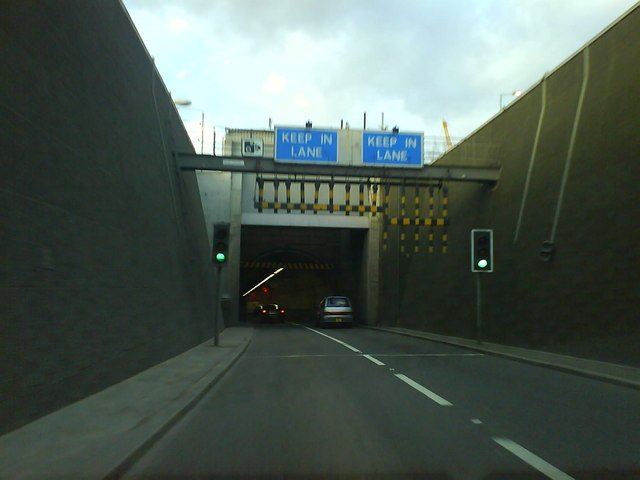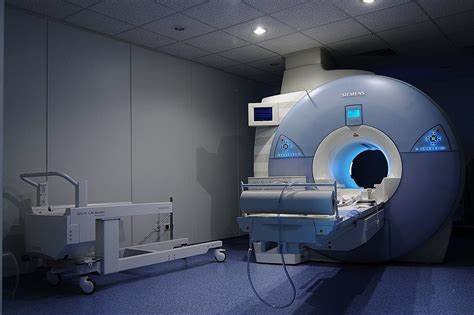The Blackwall Tunnel is one of London’s most important transportation routes, linking the districts of Greenwich and Tower Hamlets under the River Thames. Serving as a key part of London’s road network, the tunnel facilitates the movement of thousands of vehicles daily, easing congestion and connecting the city’s East and South London regions. Despite its crucial role, the Blackwall Tunnel’s history and significance often go unnoticed by those passing through it. In this article, we’ll explore the Blackwall Tunnel in-depth, delving into its history, construction, importance, challenges, and much more.
The Origins of the Blackwall Tunnel
The concept of the Blackwall Tunnel emerged in the mid-19th century as London’s urban population expanded rapidly. The growth of the city created a need for efficient transport systems across the River Thames. At the time, ferries and boats were the primary means of crossing, but they were slow and often unreliable. The vision for an underground tunnel arose as an innovative solution to this growing problem.
In 1870, the Blackwall Tunnel project was approved, with the goal of providing a direct route for vehicles and pedestrians to cross the Thames. The tunnel was seen as a groundbreaking engineering feat that would greatly reduce travel times and ease the flow of goods and people between East and South London. The tunnel’s design and construction required advanced technologies and methods that were cutting-edge for its time.
Construction of the Blackwall Tunnel
Construction of the Blackwall Tunnel began in 1892 under the supervision of the renowned engineer Sir Albert Joseph Rendel. The tunnel was to be built using a technique known as “shield tunneling,” which was a relatively new method at the time. This technique involved using a mechanical shield to excavate the tunnel while workers built the tunnel walls from inside the shield, protecting them from the pressure of the earth above.
The tunnel faced many challenges during its construction, including the need to tunnel through a mixture of clay, gravel, and sand, as well as the difficulty of working under the River Thames. Nevertheless, after years of hard work, the tunnel was completed in 1897, with a grand opening that marked a significant achievement in the history of London’s infrastructure.
The Blackwall Tunnel Today
The Blackwall Tunnel is still in operation today, serving as a key transport route for vehicles traveling between East and South London. The tunnel connects the boroughs of Greenwich and Tower Hamlets, with an average daily traffic flow of over 40,000 vehicles. It is part of the A102 road and offers a vital route for commuters, transporters, and anyone traveling between the two areas.
The tunnel comprises two separate bores, one for southbound traffic and the other for northbound traffic. Each bore is equipped with ventilation systems to manage air quality and reduce pollution levels, as well as emergency exits and other safety features to ensure the safety of motorists. Despite being over 100 years old, the Blackwall Tunnel continues to play a crucial role in London’s transport network, helping to alleviate congestion in other areas of the city.
The Blackwall Tunnel’s Importance in London’s Transport Network
The Blackwall Tunnel plays a pivotal role in connecting key locations in London. It provides a direct route for motorists to travel between the southern and northern parts of the city, bypassing other busy crossings like Tower Bridge and London Bridge. This allows for smoother and faster travel, particularly for those in the Docklands and Canary Wharf areas, which are important financial and commercial hubs.
The tunnel is especially significant for the local economy, providing vital access for businesses in the East and South London areas. The ease of movement through the tunnel helps facilitate trade and commerce, benefiting industries such as transport, logistics, and construction. Additionally, the Blackwall Tunnel provides a direct link to the A2 road, which connects London with the south of England, making it an essential part of the regional transport network.

Challenges Faced by the Blackwall Tunnel
Like many infrastructure projects, the Blackwall Tunnel has faced its fair share of challenges. Over the years, the tunnel has undergone numerous maintenance and upgrade projects to ensure that it remains safe and functional. Some of the main challenges faced by the tunnel include traffic congestion, aging infrastructure, and safety concerns.
The Blackwall Tunnel has been known for experiencing significant traffic delays, particularly during rush hours. As one of the few routes under the Thames in this area, it often sees high volumes of traffic, leading to congestion and longer travel times. This issue is compounded by the fact that the tunnel has a relatively narrow width, making it less able to accommodate the growing number of vehicles on London’s roads.
Another significant challenge for the Blackwall Tunnel is its age. Having been in operation for more than 100 years, the tunnel requires constant upkeep to ensure its structural integrity and safety. Over the years, there have been periodic closures for repairs, resurfacing, and safety upgrades to meet modern standards.
Modernization Efforts and Upgrades
In response to the ongoing challenges faced by the Blackwall Tunnel, there have been several modernization efforts and upgrades to improve its efficiency and safety. The most notable of these efforts has been the installation of a new ventilation system, designed to reduce air pollution and improve air quality within the tunnel.
Additionally, the tunnel has undergone major repairs to strengthen its structure and extend its operational life. These upgrades have included the replacement of aging parts, the resurfacing of the tunnel floor, and the installation of advanced traffic management systems. These changes have helped to address traffic congestion and improve the overall safety of the tunnel.
The Blackwall Tunnel and the Future of Transport in London
The Blackwall Tunnel’s continued importance to London’s transport system highlights the ongoing need for efficient and effective infrastructure. However, with the city’s population continuing to grow and demand for transport services increasing, it is clear that the tunnel cannot be the sole solution for future traffic needs.
Plans are already underway to address these challenges, including proposals for new transport links across the Thames. These plans may involve the construction of new tunnels or bridges to relieve pressure on existing crossings like the Blackwall Tunnel. These new developments would not only reduce congestion but also provide alternative routes for commuters and businesses.
The Blackwall Tunnel’s Impact on Local Communities
Beyond its role as a transport route, the Blackwall Tunnel has a significant impact on the communities that surround it. The tunnel is located in an area that has seen significant development over the years, including the regeneration of the Docklands and Canary Wharf. This development has brought both opportunities and challenges to the local communities.
While the Blackwall Tunnel has helped to create better access to these areas, it has also contributed to traffic congestion and environmental concerns. The close proximity of the tunnel to residential areas means that air quality can be an issue, particularly in the nearby neighborhoods. Efforts to reduce pollution from the tunnel are ongoing, with initiatives like low-emission zones and improved vehicle standards aimed at mitigating its impact on the surrounding communities.
The Legacy of the Blackwall Tunnel
The Blackwall Tunnel’s legacy is one of engineering innovation and urban development. It remains one of the oldest and most important tunnels in London, serving as a symbol of the city’s ability to adapt and evolve in response to its growing transportation needs. The tunnel has weathered the test of time, continuing to provide a crucial connection between East and South London.
Its construction marked a significant milestone in London’s transport history, and its continued use is a testament to the foresight of its creators. As London looks toward the future, the Blackwall Tunnel will remain an integral part of the city’s infrastructure, adapting to modern needs while maintaining its historic significance.
FAQs
What is the Blackwall Tunnel?
The Blackwall Tunnel is a major road tunnel under the River Thames in East London, connecting the London Borough of Tower Hamlets to Greenwich. It is a crucial part of the road network, providing an essential crossing for vehicles traveling between the North and South of the Thames.
When was the Blackwall Tunnel built?
The Blackwall Tunnel was first opened in 1897. The tunnel was built to accommodate the growing traffic demand in East London. A second tunnel was completed in 1967 to handle increased traffic volumes.
How deep is the Blackwall Tunnel?
The Blackwall Tunnel has a depth of about 60 feet (18 meters) beneath the River Thames. This makes it one of the deepest tunnels in London, designed to allow ships to pass above without obstruction.
What is the traffic flow in the Blackwall Tunnel?
Traffic flow in the Blackwall Tunnel is heavy, especially during peak hours, as it is a vital route for commuters and freight vehicles. To ease congestion, there are two lanes for northbound traffic and two lanes for southbound traffic in the tunnel. However, delays are common due to high traffic volumes.
Are there any tolls for using the Blackwall Tunnel?
Currently, the Blackwall Tunnel does not charge a toll for vehicles to pass through. However, it is subject to congestion charges for vehicles entering certain areas in central London, depending on your route.
Is the Blackwall Tunnel closed for maintenance?
Occasionally, the Blackwall Tunnel is closed for maintenance and repairs. These closures are usually planned and announced in advance to minimize disruption to traffic. You can check for any upcoming closures on official transportation websites or news outlets.
Final Thought
The Blackwall Tunnel stands as a key piece of London’s transportation network, serving the city for more than a century. Despite the challenges it has faced, including traffic congestion and the demands of an ever-growing urban population, the tunnel continues to be a vital link for commuters, businesses, and the broader city. As London moves toward further development, the Blackwall Tunnel’s legacy will remain an important part of the city’s infrastructure story, playing a crucial role in shaping the future of transportation in the capital.
To read more; Click here



